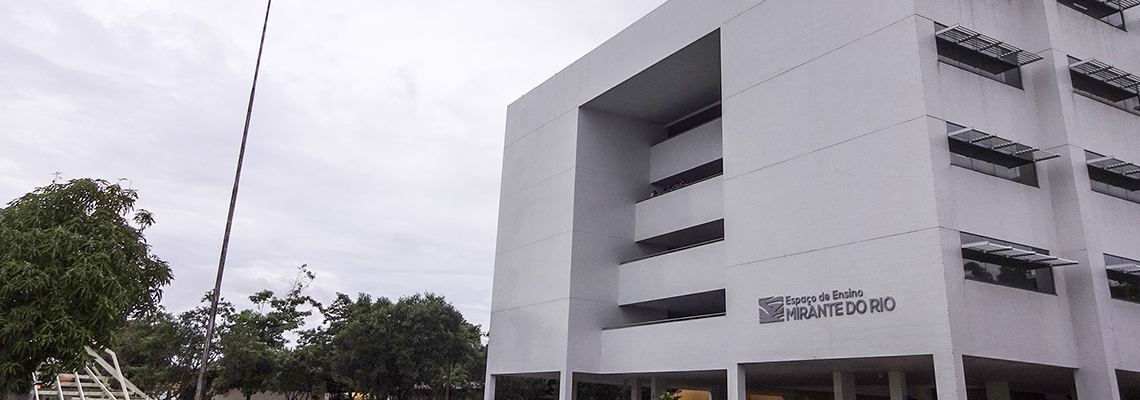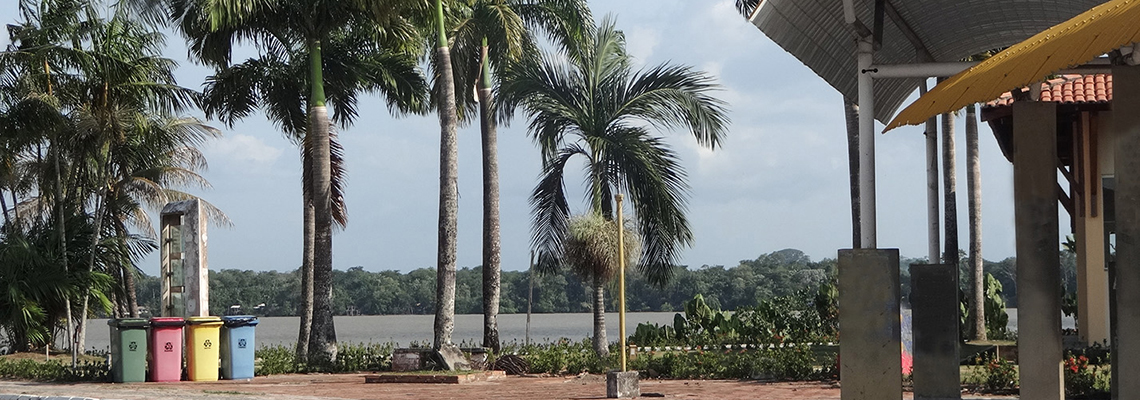GRADUATE PROGRAM IN CHEMISTRY (PPGQ/UFPA)
AREA OF CONCENTRATION: CHEMISTRY
RESEARCH LINES
1. Natural Products Chemistry, Biodiversity and Biotechnology
Natural Products Chemistry is the branch of Organic Chemistry responsible for the isolation and characterization of natural substances produced by the secondary metabolism of plants, microorganisms, and marine animals. Studies in this area are considered strategic because they involve knowledge of biodiversity in a broad sense, in addition to providing renewable sources of substances that are important in various areas of science and technology. Biotechnology, by definition, refers to the use of knowledge about biological processes and the properties of living beings, in order to solve problems and create useful products or, even, the use of living organisms or parts of them, for the production of goods and services. The Amazon comprises one of the largest and most diverse biomes on the planet, containing a rich biodiversity of fauna and flora with a high degree of endemism. Within this context, the research line of Natural Products Chemistry, Biodiversity and Biotechnology of the Postgraduate Program in Chemistry at UFPA, located in the Amazon, aims to take advantage of the inputs and residues of the Amazon in the chemical, pharmacological, and biological investigation of medicinal plants, marine animals, and associated microorganisms, in the search for new molecules with potential for medical, biochemical, biological, and agrochemical use, in addition to carrying out studies of biotechnological processes aiming at obtaining intermediates or organic substances with high added value for application in the pharmaceutical, cosmetic/fragrance, and agrochemical industries.
2. Computational Chemistry
Computational Chemistry (CQ) represents an interdisciplinary field within Chemistry, encompassing all its specialties, technologies and associated industries. The fundamental purpose of QC lies in the development and use of specialized software to address issues in the chemical, biochemical, technological, and industrial fields. Thus, QC results in the identification of several aspects, such as Molecular Modeling (or Molecular Simulation), Chemometrics, Cheminformatics and Bioinformatics, which can be systematized into specific objectives and methods: (i) Calculation of molecules properties, whether real or not yet synthesized, as well as of molecular systems encompassing solids, liquids, gases, plasmas, interfaces and biological organisms. The diversity of properties ranges from electronic structures and conformations of isolated molecules to different forms of energy, dynamics and reactivity of molecular systems. The fundamentals are based on theories and models of molecular mechanics (MM) and quantum mechanics (QM), electromagnetism and statistical thermodynamics. Typical computational methods include ab initio, Density Functional Theory, Hartree-Fock and semi-empirical, molecular mechanics and dynamics, Monte Carlo, including those related to chemical and biochemical kinetics, energy minimization, conformational and spectroscopic analysis, thermodynamic integration and perturbation, error treatment and molecular docking, as well as hybrid QM/MM methods. These aspects are commonly associated with the term Molecular Modeling (or Molecular Simulation). (ii) Analysis and processing of chemical information from laboratory experiments, instrumental/industrial monitoring and simulations, in real time or stored in databases (typically with numbers of entries in the order of several million). This includes, for example: (a) prediction of spectra (NMR, Infrared, Mass, etc.) that complement the confirmation of chemical syntheses; (b) determination of molecular structure-activity relationships (QSAR); (c) planning and assistance of automated experimental techniques (such as combinatorial chemistry, high-throughput screening and flowshops) aimed at the simultaneous synthesis of several products of chemical, agrochemical and pharmaceutical interest; (d) determination of genetic sequences; (e) automatic classification of chemical and biochemical reactions; (f) pattern recognition; (h) quality control and instrumental calibration.
3. Chemistry Applied to Energy, Materials and Analytical Methods
The research line Chemistry Applied to Energy, Materials and Analytical Methods of the PPGQ aims to synthesize micro, meso and macroporous materials for use as catalysts or adsorbents; to develop and study new processes and routes in the production of fuels and derivatives; to expand biocatalysts and bioprocesses; use industrial waste in the development of new materials, catalysts and industrial processes and to synthetize biopolymers and biodegradable composites. Furthermore, it focus on involving the utilization of different analytical strategies for sample preparation and calibration, as well as obtaining faster, more robust, economical, sustainable and efficient methodologies that follow the guidelines of green chemistry. Also, it pursues to develop and apply methods that use the most varied analytical techniques, such as spectroscopic, electrochemical, chromatographic, and electrophoretic, used in the determination of inorganic and organic constituents, of environmental, pharmaceutical, food and clinical interest, in the most varied types of matrices. Yet, it desires to employ analytical and bioanalytical techniques to analyze important substances present in living beings and other biological systems, and in analyses that may indicate adulteration or falsification in food, natural products and medicines. Development of chemometric methods for planning univariate and multivariate analytical methodologies and analytical signal processing (filtering, smoothing, compression, etc.), using calibration and classification models in various instrumental analytical techniques, applied to the analysis of samples of natural oils, water, beverages, food, medicines, fuels, etc. Expansion of studies to assess the environmental impact of organic and inorganic pollutants, natural or not, and the processes of monitoring and/or controlling these pollutants; extraction and analysis of compounds in various environmental samples (water, soil, sediments, residues, air and wastewater); studies of metal speciation in the environment.








